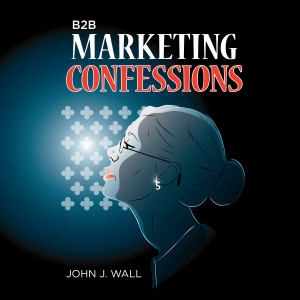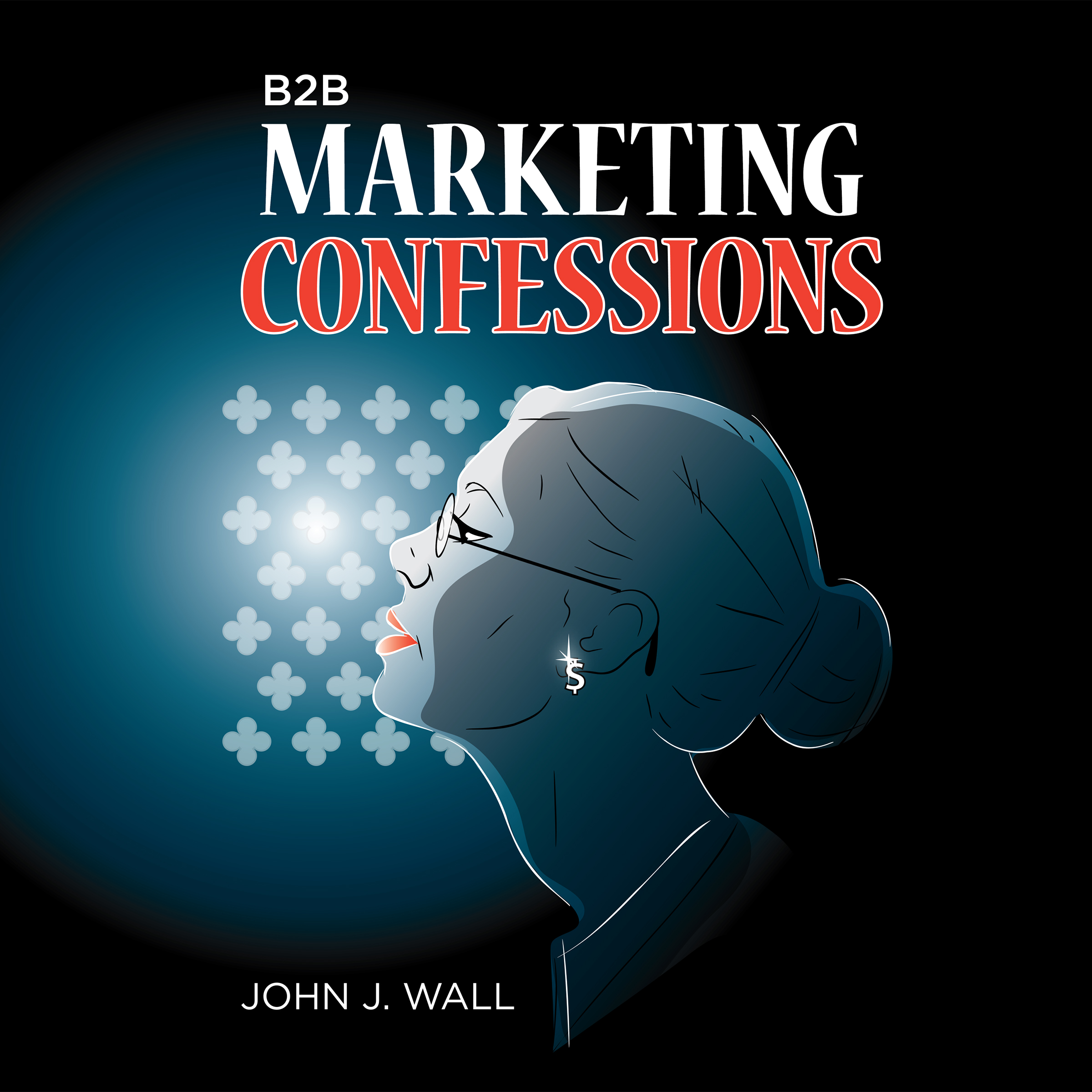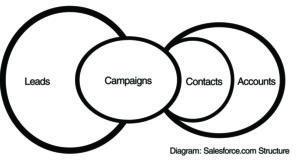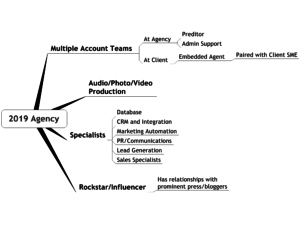Here’s the discussion with Derek Sivers, if you’d rather listen you can get the podcast here.
John: Hello, everyone. We have a great interview today with Derek Sivers, author of a number of books on doing business in the Far East. You may know him as the man behind CD Baby. He was on last in 2011 when he had done a book for The Domino Project called “Anything You Want.” We had discussed what went into that project, but he’s had a whole bunch of stuff since we talked to him last.
Derek, welcome aboard. Thanks for talking with us.
Derek: Thanks, John. I can’t believe it was 2011. It feels like it was maybe a year ago. You’re right. It’s been a while now.
John: The great thing is that your blog is active. You have a ton of people who follow you and everything over there, so I was able to go in and read what’s been going on. First, let’s get you caught up before we jump into the Wooden Egg Project and what this is all about.
When we last talked, you were in Singapore and now you’re in New Zealand. I’ll have a link to the post you have about that, but tell us a little about how that all came about.
Derek: Sure. To back up a bit, I’m so American. I was born in California and I’ve lived in California, Chicago, Boston, New York City, Woodstock, Portland, Santa Monica, and I almost moved to Texas until I realized that America had become kind of like my glass jar – like I was a fly bouncing around inside the jar and I needed to lift off the lid and go out into the rest of the world.
That was a few years ago when I gave myself a personal challenge to live outside of the U.S. for the next 40 years because it was around my 40th birthday. I figured I’d spent the first 40 years of my life inside the U.S., so I’d challenge myself to spend my next 40 outside the U.S. That’s about the time I met my wife. We got married and went around the world to look for a new country to call home. We landed in Singapore and really loved it. We filled out a ton of paperwork – visa and immigration stuff – and I became a permanent resident of Singapore.
I really thought we were going to spend the rest of our lives there, but then we had a baby. Singapore is an awesome city. I love it, but for a baby, I still have this thing where I think babies/kids should grow up outside in nature. That’s one of the few things that Singapore lacks, so instead we picked another place on the map and moved to New Zealand, mostly just as a good place to raise a kid, and I also realized that I needed a lot more time to focus internally instead of externally, if you know what I mean.
John: Right. With this Wooden Egg Project that you’re doing, you came out with a series of 16 books back in 2013 covering a whole ton of countries over in that part of the world, and now in 2014, all of them have been updated. They’re massive books. I look at this pile and I think, “Why the hell did you drop 16 books at once?” So tell us about this. Give us the sketch here.
Derek: Imagine you moved to a part world that you knew nothing about. I never lived in Asia before. Here I am living in Singapore. I really know nothing about it. I know nothing about Indonesia and I’m right next to it. I could literally see Indonesia out of my window of my apartment, but I knew nothing about it. I’m a one-hour drive away from Malaysia, but I know nothing about Malaysia. I’m a 30-minute flight away from Thailand, but I know nothing about Thailand.
I just wanted to understand this part of the world more. I wanted to get to know my new neighborhood, in a way. At first, I was kind of haphazardly taking little trips and walking around looking at temples and talking to random people who I bumped into. But I was learning very slowly, and I wanted to learn in a more intense and concentrated way. They say that the best way to learn something is to teach it. This is part of why you do these podcasts, right?
John: Sure.
Derek: It’s that same motivation. I wanted to really understand my new neighborhood, so I decided to start writing 16 books per year about 16 countries in Asia. The big idea that I think your audience will find interesting because I think it applies to a lot of projects they do was to get over that paralysis of launching something. I decided up front that these books were not going to be very good at first. The first year, I wanted to put them out, even if they weren’t good. But then I’d come back and do them all again the following year, and then they’d be pretty good. And then I’d do them all again and they’d be very good. Maybe by the fourth of fifth year, I’d be able to call them great or even amazing.
It’s interesting to take this upfront commitment to improving something every year and just having to humbly accept that it’s not going to start out very good, but you’re just going to begin.
John: It’s funny. That’s become a little more vogue. I think people are more understanding of how, when you create something from scratch, it’s going to be very rough-hewn the first time through. But with each iteration it gets stronger and faster.
Just to give everybody an idea, let me go down the list. It’s Cambodia, China, Hong Kong, India, Indonesia, Japan, Korea, Malaysia, Mongolia, Myanmar, Philippines, Singapore, Sri Lanka, Taiwan, Thailand, and Vietnam.
They’re all e-books available for under $10 through Leanpub, Amazon, and Apple iBooks. They’re all there. This year, you’ve done this massive book of nearly 5000 pages – you’ve bundled all 16 into one shot if people want to go on some incredible learning adventure.
Talk a little bit about the process. You have a post about how you farmed a ton of this work out and how you changed the process a couple times with that.
Derek: Now imagine that you’re me sitting in a hotel room in Indonesia and you’ve decided to write 16 books a year about 16 countries. The first thought I had – of course, like any of us – is that I was just going to do it all myself. That’s always our first impulse. I thought, “Okay, 16 books per year. There are 52 weeks in a year, and let’s say I spend three weeks each in 16 countries. That’s 48 weeks, and I’ll take a few weeks off at the end of the year.” At first I thought that my next few years were going to be spent just constantly traveling 16 countries for three weeks each, writing everything I learned in those three weeks and going onto the next country. But my wife was pregnant at the time, so that idea lasted about a minute.
The next idea was that I was going to have 16 different authors from these 16 countries write the books. That idea lasted a few months. A few of the people did a really good job, but the guy from Indonesia just flaked out and disappeared, so partway through I realized that this was still too fragile of a process. I’m really into that E-Myth-style repeatable process: making little systems so that if any one person drops out, the whole process doesn’t collapse. On that note, you realize how fragile the idea of making a book can be if it’s just dependent on an author. If that author disappears or something happens, then there’s no book.
But I really wanted the book to exist, no matter what.
Then I had to go back to all of the wisdom I’ve read from all of these books over the years, like crowdsourcing – including books like “The Wisdom of Crowds” and “Wikinomics.” I decided to put a lot of those lessons to work. I made this system where I came up with 200 questions that, as an entrepreneur, I wanted to know about each of these countries. Then I applied the same 200 questions to all 16 countries, and then I went onto Elance and oDesk and hired three business researchers per country to answer the same 200 questions over and over again, so that now, for every question, I would have three different answers per question. The big idea was getting it from one local native person, one foreigner/expat who had been living there awhile, and then one other person. This way, the book represents a broad spectrum of looking at things, instead of just one person’s opinion.
Lastly, I just had to hire a writer who would take those three different answers and combine them into one essay per question. And that became my little book factory process.
John: That’s great. That’s very interesting. Give us an idea of the scope of this, now that you’ve done this. For these 16 countries, is it as if you were writing 16 books on individual U.S. states? Is it like 80% is similar and 20% is different, or is this as broad as it could get, as if you were writing about England, Canada, and Mexico? Where does it fall on that spectrum?
Derek: It’s more like your England, Canada, Mexico analogy. That’s a pretty good comparison because there are some countries that are pretty similar, like Indonesia and Malaysia. Thailand and Cambodia have a lot in common.
But then there’s some where the authors are asking me how I could even include them in the same series, such as Mongolia. I had no idea, until I went there two years ago, that Mongolia is a lot more Russian in its influence. The Mongolian writing is the Russian alphabet, and Mongolians don’t really consider themselves part of this East Asian culture so much. Even though they’re physically connected to China, they’re enemies with China, and they like to probably differentiate themselves from China. So Mongolia feels more like Kazakhstan.
Japan is also kind of an outlier in Asia, where people in Asia see Japan as the rich, advanced, more-Western culture. They don’t really fit in with the rest of Asia in many ways. On the other hand, China is its own thing, and India is its own thing.
It’s vastly different. I thought there would be more similarities, but many times there are a lot of questions in the books about comparing cultures, asking things like, “What are the cultural differences between people from India and Vietnam?” and the answers were like, “What are the cultural similarities?” There are almost none. Yes, technically we’re in Asia, but – to use the European comparison – think about what people from Greece and Iceland have in common. They’re technically both part of Europe, but you look at their similarities and they’d probably shrug and say, “Well, we eat fish.”
John: Yeah. There is literally nothing in common as far as that kind of spread there.
Derek: I have a great story for you. Getting back on track with Marketing and Coffee and such, this is actually the point that I wish I would have kicked off this phone call with. This is what I should have started with because to me, this is the most fascinating story that directly applies to everyone.
When I first started this project, I knew this French businessman who grew up in France and had been living in Asia for the last 15 years. He lived five years each in Korea, Japan, and China, so he knew a lot of this Pan-Asian culture thing. I was there in Singapore interviewing him and I said, “I’m starting this book series. I’d like to interview you first. Can you tell me something about doing business in Asia?” He told me something that blew my mind that I think will be really interesting to everyone. He said, “In Asia, people use English as the common business language (it’s the common shared language between these countries and for foreigners coming in to do business) but the thing is, even though we’re all using English, the meaning of words is completely different, depending on the culture.
For example, if I say the word ‘quality,’ what does that mean to you?
John: That usually means making sure you have accuracy in your process; that all your widgets are shaped the same.
Derek: Yeah. To me, I think it’s almost like that little “made in the U.S.A.” flag that represents quality. It’s well-built and it’s going to last. It’s solid and it works.
When I said, “It works,” he beamed a big smile and said, “Guess what? I knew you were going to say that because you’re American. You have to understand that that’s the American answer for what quality is. If I were to ask the same question in Korea, everybody knows that ‘quality’ means – it’s brand-new. It’s all culturally understood that when you say quality what you mean is: this is the newest, brand newest thing. That’s what quality means in Korea. Therefore, if you’re planning on doing business in Korea, don’t go in there with your marketing trying to emphasize the timeless quality or the legacy aspect of your product. That’s not quality. Quality means it’s the newest thing.”
He said, “On the other hand, in Japan, when you say ‘quality,’ everybody understands that means ‘perfection.’ Japan is obsessed with perfection, so ‘quality’ means ‘zero defects.’ It’s perfect. It has no flaws. That’s what quality means in Japan. This matters because, for example, I’ve heard instances where somebody is shipping products into Japan, and if the shipping container has a dent in it, even if the product inside is flawless, it’s not longer considered a quality shipment because it’s no longer perfect.”
He said, “On the other hand, in China, when you say ‘quality,’ everybody understands that that means it gives you status. It’s all about social status. It doesn’t matter whether the product itself is well-built or if it’s going to fall apart in a week or last at all – if it gives you social status, it’s quality.”
We’re using the same words, but it’s a vastly different meaning in every culture.
John: That is fascinating. So it’s really about being able to fit into the local culture and understanding what all those different cultural meanings are just so that you can even function.
Derek: Exactly. When I first moved to Singapore three years ago, the thing that I missed most was Amazon, where in the U.S. I’d gotten so accustomed to, anytime I wanted to buy anything like noise-canceling headphones or whatever. You just go to Amazon, search it, instantly look at this product if it has a ton of five-star reviews and is best-selling, and within one minute, you click “Add to Cart” and it shows up at your door.
But in Singapore, even though it’s very high-tech and everyone is online, there is no online shopping. It totally blew my mind. At first, I thought, “Hey, this is a big opportunity. Let’s start a new company. Let’s set up e-commerce in Singapore. I can’t believe they hadn’t thought of that yet.”
But it turns out that, of course, they’ve thought of it, but culturally in Singapore, shopping is seen as something you go out and do with your friends. It’s a social activity. So the idea of saying, “Now you can shop online at home in your underwear” is almost like somebody trying to market a product in America saying, “You no longer need to go out to a bar drinking with your friends. Now you can sit at home drinking in your underwear.” That’s kind of sad. That product wouldn’t go over very well. That’s how it feels when people try to market online shopping in Singapore; culturally, it just doesn’t fit.
I just find all this fascinating. We hear all these stories, especially in America, about the rise of Asia, with China being the new biggest market in the world, and there being billions of people in India, China, the Philippines, and Indonesia. This is the new market that we almost pay attention to, but it’s fascinating to realize that you can’t just take your good idea from America and go make it happen there. It has to fit in culturally.
John: This is one thing that, as an American I can speak to and say that I have lived, is thinking our way of doing things is superior, like we should force this process on the rest of the world, in spite of the fact that there are more guns and obesity here than anywhere else in the world. That’s just a side effect of our great commerce engine.
Derek: Right. I think that even the last time you and I spoke I was still in that mindset that my American/Silicon Valley/California/entrepreneur/founder of everything kind of mentality was the right way to be. I felt that this is how everyone should be. Everyone should start a company.
I’d only been in Singapore for a month or two when they asked me to come speak to a class at the local business school. I went and spoke to this class. Imagine this. It’s 40 business school students. I’m speaking to this room and start out my talking asking, “Who here would like to start their own company someday? Raise your hand.” No hands went up. I thought, “Okay, maybe they’re just shy.” I said, “Come one, sometime ever in your life, who would ever like to start your own company someday?” One reluctant hand went up.
I pointed to a person who didn’t raise his hand – because I thought they were just shy and would actually like to start their own business – and said, “You. Why don’t why you want to start your own company someday?” He said, “Why would I take the risk? I’m spending all this money on business school so I can get a nice, steady job.”
I said, “Okay,” and I pointed to somebody else and asked, “Why don’t you want to start your own company someday?” They said, “I don’t have any ideas.” I pointed to somebody else and asked them and they said, “My parents took the risk. My parents had a little shop. It was very difficult for them, but they did it for years to save money so that I could have a secure future. So why would I risk that?”
Then I realized that our American way of doing things is not the center of the universe, despite what the media that we’re surrounded with makes you feel in America, like America is everything. All of the movies are set here. All the TV shows are set here. Yes, there are some other little countries you can go vacation in, but come on, America is the center of the world.
John: Right. The aliens always land here.
Derek: Exactly. They always go for the White House. They’re not landing in Dubai. I realized Americans are kind of off on one far extreme end of things. It’s a very individualistic, cowboy-kind of “I’ll do it all myself. I’m going to start my own thing.” Then I realized it’s not that they’re wrong, but that it’s a different way of thinking. It takes a while to accept that there’s the American way of looking at this and there’s the Asian way of looking at it, and the Indian way of looking at it, and the Japanese way of looking at it. They’re all just from different perspectives.
John: That’s excellent. Thanks for speaking with us. Everyone can check out the Wood Egg series of books wherever fine e-books are sold.
Derek, is there anything else you’d like to say in closing? Do you have travel coming up or other stuff you’d like to talk about?
Derek: No. I really admire what you’re doing here in this show. You’re constantly on your blog putting out everything you’re learning all the time. I had a personal tragedy happen a few weeks ago where one of my best friends – one of the smartest people I know – was just out riding his bike in the bike lane on a Sunday afternoon and a car accidentally swerved into the bike lane and killed him instantly. It really bummed me out for the usual reasons, but I also wish that he would have taken the time to share what he knew. He never really did. If you hung out with him in person, he’d have fascinating little bits of wisdom and insight on life that he would share with you conversationally. But he never took the time to create like you do this weekly podcast, or write books or articles. He didn’t do that and I wish he would have. After a tragedy, we all take out from it what we do, and for me it was just a reminder of how important it is for all of us to share what we’re learning and put it out there so that it lives on. I really love what you’re doing and I’d love to do more of the same, too.
John: Thank you. I appreciate that. We will keep cranking it out here. We appreciate everybody taking the time to listen. We will catch up with you next week. Until then, enjoy the coffee!
Derek: Thanks.
 B2B Marketing Confessions is now available as an audiobook! I know it’s absurd that a guy with a podcast needs a year to get the audio version of his book done, but that’s how the chips fell.
B2B Marketing Confessions is now available as an audiobook! I know it’s absurd that a guy with a podcast needs a year to get the audio version of his book done, but that’s how the chips fell.










